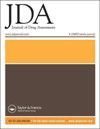Implementation of an internal check of oral oncolytics: a single-center, specialty pharmacy safety initiative
IF 2.4
引用次数: 0
Abstract
Abstract Background: Oral oncolytic therapies (OOT) for patients with cancer continue to pose unique safety challenges. Unlike infusion therapies, there are few best practice recommendations for checking OOT. A multicenter review of four oncology clinics in the United States, estimated 8.1 errors in medications per 100 clinic visit identified. 1 The American Society of Health-System Pharmacists identify administration and ordering were the most common phases of the medication-use process where errors occur. 2 Despite the high-risk nature of OOT and high error-rate in these particular phases, with pharmacist surveillance, there continues to be little consensus for oral oncolytic safety to guide specialty pharmacists (SPs). Aims: The objectives of this single-center, quality improvement study was to review the quality metrics of the implementation of an oral oncolytic check process, in the specialty and ambulatory setting as a method to enhance medication safety and improve vigilance. Methods: The study was approved by the Institutional Review Board at the Hospital of the University of Pennsylvania. A standardized check process and documentation of capecitabine and temozolomide was implemented beginning in December 2016 for an adult oncology population. SPs have direct communication to pharmacy specialists and provider teams through the electronic medical record via Epic. Upon receipt of a new prescription, the SP reviews the prescription for: prescriber, chemotherapy regimen, indication, body surface area, dose verification, appropriate day supply/refills, laboratory values, allergy evaluation, drug interactions, and pre-medications. The SP documents this review as an intervention in Epic for every capecitabine and temozolomide prescriptions before processing. Intervention data between December 2016 and September 2018 was queried and quantified. Results: Over 22 months, a total of 1,619 intervention documents were reviewed with 551 intervention documents requiring intervention (34%). A total of 639 actionable interventions were identified. The top three categories were missing pre-medications (54.1%), missing/abnormal laboratory results (19.6%), and drug-drug interactions (13.6%). Rare interventions included dose clarification requests (3.6%), dose change requests (1.4%), and quantity supply requests (2.7%). A SP referred to a pharmacy specialist or provider outside of Epic communication in 21.2% of cases and 3.7% of cases respectively. The average time by the SP per intervention was 12.1 minutes (Range: 10-45 minutes). Conclusions: OOT is exponentially growing with unique risks associated when prescribing, with the SP being the last line of defense. Implementing an internal checking tool of oral oncolytics creates a standardized safety check and promotes active communication with oncology care teams. Addition of all OOT to incorporate mandatory documentation is ongoing.口腔溶瘤药物内部检查的实施:一个单一的中心,专业药房安全倡议
摘要背景:癌症患者的口服溶瘤疗法(OOT)继续带来独特的安全性挑战。与输液疗法不同,很少有检查OOT的最佳实践建议。一项针对美国四家肿瘤诊所的多中心综述估计,每100次就诊中有8.1次药物错误。1美国卫生系统药剂师协会认为,用药和订购是用药过程中最常见的出错阶段。2尽管OOT具有高风险性,在这些特定阶段的错误率很高,但在药剂师监督下,对口腔溶瘤安全性指导专业药剂师(SP)的共识仍然很少。目的:这项单中心质量改进研究的目的是审查在专科和门诊环境中实施口腔溶瘤检查过程的质量指标,以此作为提高药物安全性和提高警惕性的方法。方法:该研究由宾夕法尼亚大学医院的机构审查委员会批准。从2016年12月开始,对成年肿瘤学人群实施了卡培他滨和替莫唑胺的标准化检查流程和文件记录。SP通过Epic通过电子病历与药房专家和供应商团队直接沟通。收到新处方后,SP会审查处方:处方医生、化疗方案、适应症、体表面积、剂量验证、适当的日供应/补充、实验室值、过敏评估、药物相互作用和用药前。SP将这一审查记录为Epic对每一个卡培他滨和替莫唑胺处方在处理前的干预。对2016年12月至2018年9月的干预数据进行了查询和量化。结果:超过22 月,共审查了1619份干预文件,其中551份干预文件需要干预(34%)。共确定了639项可采取行动的干预措施。前三类是用药前遗漏(54.1%)、实验室结果遗漏/异常(19.6%)和药物相互作用(13.6%)。罕见的干预措施包括剂量澄清请求(3.6%)、剂量更改请求(1.4%),和数量供应请求(2.7%)。SP分别在21.2%和3.7%的病例中转介给Epic通信之外的药房专家或供应商。SP每次干预的平均时间为12.1 分钟(范围:10-45 分钟)。结论:OOT呈指数级增长,处方时存在独特的风险,SP是最后一道防线。实施口腔肿瘤学的内部检查工具可以创建标准化的安全检查,并促进与肿瘤学护理团队的积极沟通。正在增加所有OOT以纳入强制性文件。
本文章由计算机程序翻译,如有差异,请以英文原文为准。
求助全文
约1分钟内获得全文
求助全文

 求助内容:
求助内容: 应助结果提醒方式:
应助结果提醒方式:


